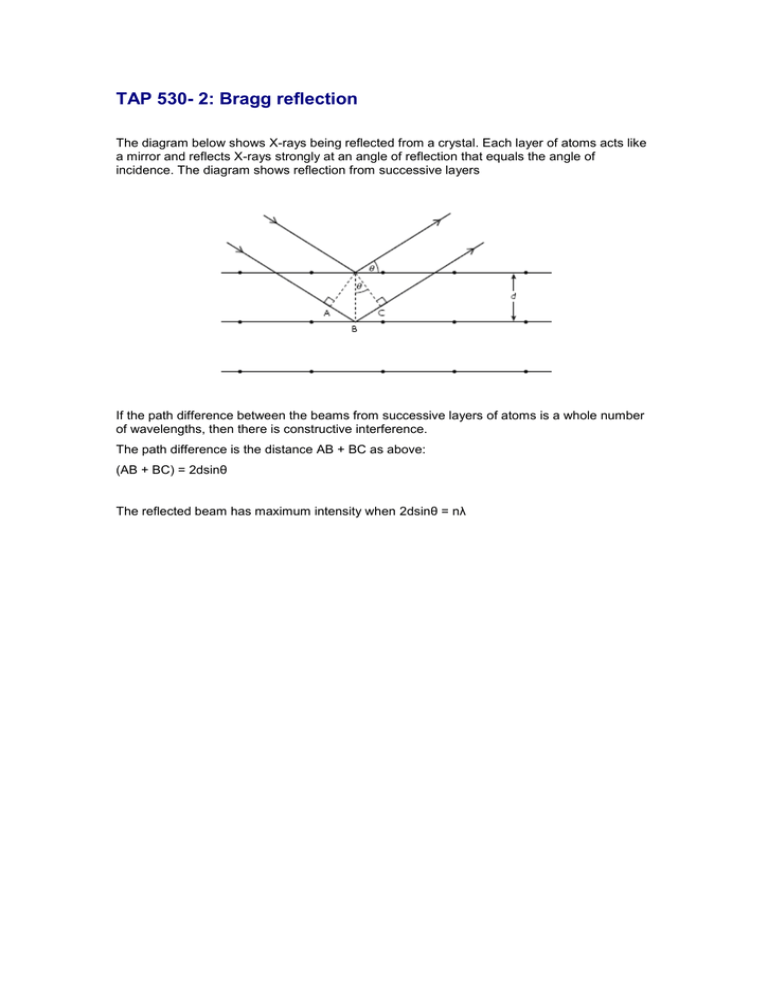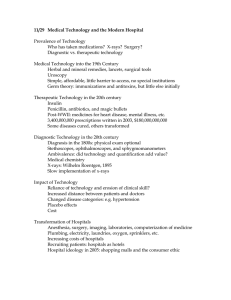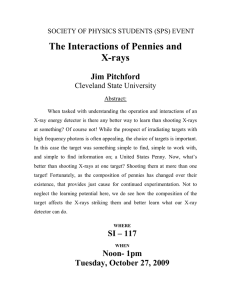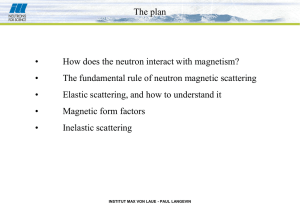Episode 530-2: Bragg reflection (Word, 27 KB)
advertisement

TAP 530- 2: Bragg reflection The diagram below shows X-rays being reflected from a crystal. Each layer of atoms acts like a mirror and reflects X-rays strongly at an angle of reflection that equals the angle of incidence. The diagram shows reflection from successive layers If the path difference between the beams from successive layers of atoms is a whole number of wavelengths, then there is constructive interference. The path difference is the distance AB + BC as above: (AB + BC) = 2dsinθ The reflected beam has maximum intensity when 2dsinθ = nλ Practical advice Some background information: von Laue's experiment In 1912, Max von Laue realised that X-rays were not charged particles as they were not deflected by electric or magnetic fields, but no-one had succeeded in demonstrating that Xrays were waves by creating interference until von Laue realised that it was the extremely small wavelength which was causing the problem. He used the spaces between atoms in a crystal to diffract the X-rays and thus produced interference. In the same year, following von Laue's discovery, William and Lawrence Bragg (father and son) varied the experiment and used a crystal to reflect X-rays and also obtained diffraction patterns. It may be useful to remind pupils of: TAP 322-5: Using a CD as a reflection grating External reference This activity is taken from Salters Horners Advanced Physics, section DUTP, additional activity 8



